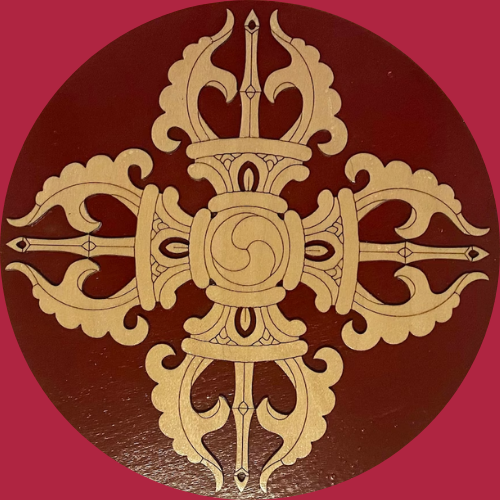Bhutanese Cuisine
Bhutan offers bewitching destinations. A nation sharing its boundary with neighboring countries of China & India. Bhutan has a distinct culture with authentic delicacies that can be relished with red rice, maize, cheese and chillies. Buckwheat forms a crucial part of their diet.
Here, the character of authentic Bhutanese food shows that Bhutan loves chillies & chees, which almost is a crucial part of every meal along with other staples like brown rice.
The following is a list of several dishes you definitely need on your next trip to the mountain kingdom-
Kewa Datshi –
Kewa datshi is a variant of cheese stew prepared by using potatoes as the main ingredient. For a milder version to suit sensitive palate, potatoes can be thinly sliced and sauted on local butter, added with cheese and chillies that can be mixed to arouse a special taste, a great option for those who can tolerate spice.
Shakam Shukam Datshi –
The shakam shukam datshi is prepared using dried meat cooked with cheese and chillies. However, what sets this food apart is the unique flavour imparted from the presence of regional Bhutanese dried white chillies instead of chillies that are sourced from elsewhere.
Ema Datshi –
Ema Datshi, the national dish of the Kingdom of Bhutan, is a stew made of chillies and cheese. A widespread dish within Bhutan, and a discussion concerning Bhutanese food cannot go without this datshi..
Gondo Datshi –
Scrambled eggs with cheese fried on butter & eaten with red rice.
Shamu Datshi –
For those who are afraid of spicy food, shamu datshi is a good alternative to ema datshi. The dish is prepared using Bhutanese mushroom, that needs to be cooked with lots of cheese, which creates a wonderful creamy stew.
Shakam Ema Datshi –
A datshi prepared using shakam (dried meat) cut into bite-size which is simmered with cheese or butter. The meal is spicy in flavour, so food enthusiasts can avoid Shakam Datshi if you want to pass the heat.
Puta –
Buckwheat noodles or Puta offers healthy alternative to regular noodles, as the meal is heavy. It is served usually poached; however, it can be stir fried on oil. Serving as a alternative to rice, a meal that is staple in Bhutan.
Yaksha Shakam –
This yummy Bhutanese meal is prepared of dried yak meat that can be relished with different ways. A way for preparing Yaksha Shakam is cooking dried meat with fermented yak cheese, one of the delicate dishes to have in Bhutan.
Red Rice –
Red rice is a staple food eaten inside the Kingdom. It’s a medium-grain rice abundantly grown in the fertile soil of the Paro. Red rice boils faster than other rice varieties. As a result of being partly polished, i.e. the amount of bran left on the grains acquires an auburn tinge. The red rice remains a must-have dish while you are at Bhutan.
Zow Shungo –
Nothing goes on waste, Bhutanese prepare a dish with all leftover food, mixing vegis with red rice which is a complete meal.
Phaksha Paa –
Phaksha Paa is a meat dish comprising slices that is stir-fried with dried red chillies, ginger, along with bok choy. It can be made as a curry or a meaty stew. The dish highlights a favourite food among Bhutanese individuals which also consists vegetables served as side dish ranging from radishes to spinach.
Jasha Maru –
Jasha Maru is a spicy stew or curry dish prepared using diced onion, chillies, tomato, ginger and coriander cooked with chicken. Ginger provides this dish with nice essence. It is served with broth and red rice or a regular one.
Jaju Soup –
A vegetarian dish prepared using native spinach or even turnips. A broth of milk and butter. Sometimes, cheese is added on Jaju to make it heartier and tastier.
Jasha Tshoem –
Jasha Tshoem is a spicy stew made up of meat and seasoned with pepper, onion, mushroom, garlic & ginger.
Khur-le
A hearty Bhutanese pancake breakfast for cold climates, made out of buckwheat, barley, or flour, that goes well with ema or shakam datshi. It can be relished with eggs.
Juma –
A Bhutanese sausage made of minced meat and rice mixed with light spices. What makes Juma interesting is the inclusion of Sichuan pepper.
Hoentay –
These are dumplings made with buckwheat flour. The filling is a mix of spinach, cheese, or turnip with dipping of ezay. Hoentay can be either steamed or fried.
Khatem –
Khatem is prepared with bitter melon or bitter gourd, usually an Indian selection. A side dish seasoned and fried with butter.
Goep –
Goep is for trip enthusiasts as it is stir-fried with chillies, vegetables and onions. The texture of Goep is really mesmerising, so taste this dish for experiment’s sake.
Goen Hogay –
This is a traditional Bhutanese salad made up of cucumber, a refreshing dish prepared with sliced onions, cilantro, flake sand, tomatoes with a sprinkle of Sichuan pepper & a lot of cheese.
Tshampa –
A dough starch prepared of whole wheat flour. This food is a staple filler eaten by rolling it as a ball that is served with other Bhutanese food like datshi.
Lom –
Lom is relished during winters inside the Kingdom, when vegetables are scarce. While preparing this dish, leaves of turnip are dried and stored, which is either sautéd or prepared with dried meat.
Zaow –
Zaow or puffed rice is a snack that is served with tea. The crunchy Zaow goes well after mixing butter.
These are authentic dishes eaten throughout the Kingdom. If you ever visit Bhutan and if you have come across these interesting food, do share with everyone, so that people can understand people, culture & the Kingdom.
